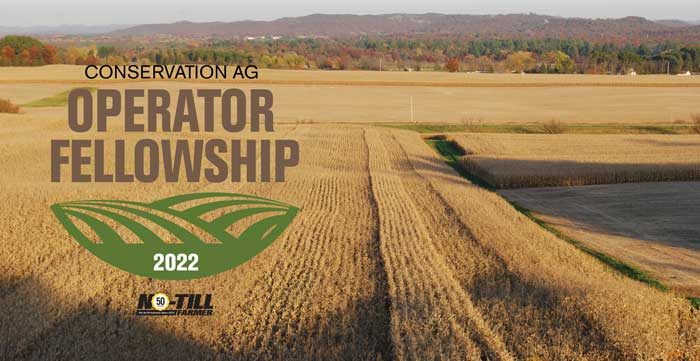No-Till Farmer
Get full access NOW to the most comprehensive, powerful and easy-to-use online resource for no-tillage practices. Just one good idea will pay for your subscription hundreds of times over.

HEIGHT DIFFERENCES. An aerial photo of Jim Leverich’s test plot shows the height differences among his trial strips. In 2022, Leverich no-tilled 19-20 different hybrids from mainly DeKalb, Croplan, Pioneer and Dairyland Seed Co.
Taking a precision approach to planting and nutrient management proves profitable for Sparta, Wis., no-tiller Jim Leverich
Leverich took hundreds of readers along in the cab in 2022 as No-Till Farmer’s Conservation Ag Operator Fellow. He farms about 1,000 acres of corn and soybeans — split 50/50 between the two crops — as well as does some custom work.
Every year, Leverich conducts hybrid and variety trials on 10-20% of his acres to find the best genetics for his environment and conditions in western Wisconsin, an area of the state with rolling hills and a variety of soil types. He relies on precision technology to find out what management improvements he can make to add value to his operation.
In this final installment of the 2022 fellowship series, Leverich reviews the data and results from his 2022 hybrid and variety trial and starter fertilizer trial.
Leverich has been doing hybrid and variety trials for the past 20 years. He plants two field-length replications for each soil type in the trials — two in a medium-textured sandy loam soil with 2% organic matter on his property and the other two on silt and clay loams that average 3% or better organic matter.
“The reason we do that is to see how the hybrids perform in a more challenging environment vs. the heavy soil,” Leverich says. “The universities and seed companies tend to put their hybrid trials on really good land, and I think that’s a big mistake because it…